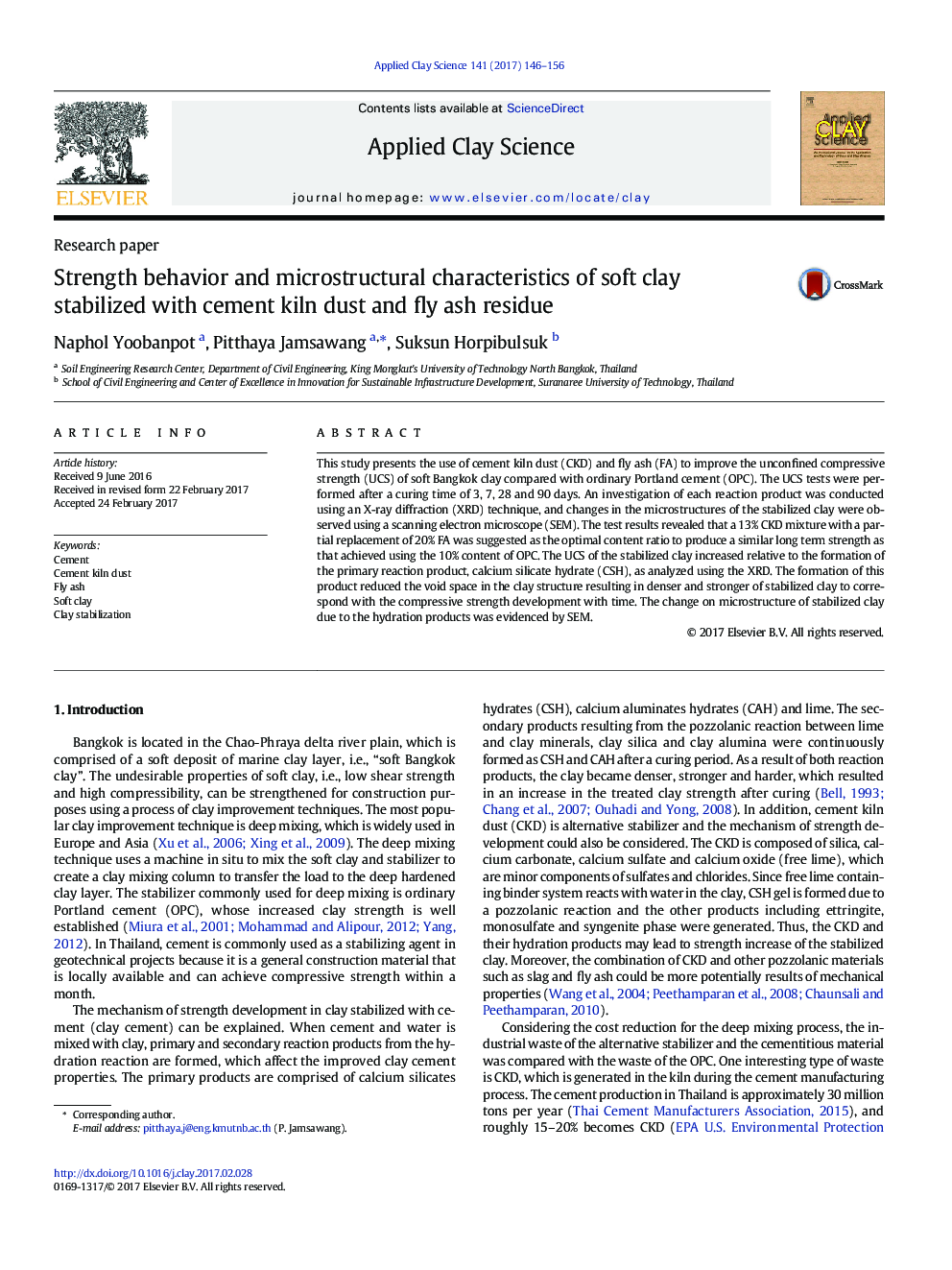| Article ID | Journal | Published Year | Pages | File Type |
|---|---|---|---|---|
| 5468637 | Applied Clay Science | 2017 | 11 Pages |
Abstract
This study presents the use of cement kiln dust (CKD) and fly ash (FA) to improve the unconfined compressive strength (UCS) of soft Bangkok clay compared with ordinary Portland cement (OPC). The UCS tests were performed after a curing time of 3, 7, 28 and 90Â days. An investigation of each reaction product was conducted using an X-ray diffraction (XRD) technique, and changes in the microstructures of the stabilized clay were observed using a scanning electron microscope (SEM). The test results revealed that a 13% CKD mixture with a partial replacement of 20% FA was suggested as the optimal content ratio to produce a similar long term strength as that achieved using the 10% content of OPC. The UCS of the stabilized clay increased relative to the formation of the primary reaction product, calcium silicate hydrate (CSH), as analyzed using the XRD. The formation of this product reduced the void space in the clay structure resulting in denser and stronger of stabilized clay to correspond with the compressive strength development with time. The change on microstructure of stabilized clay due to the hydration products was evidenced by SEM.
Related Topics
Physical Sciences and Engineering
Earth and Planetary Sciences
Geochemistry and Petrology
Authors
Naphol Yoobanpot, Pitthaya Jamsawang, Suksun Horpibulsuk,
